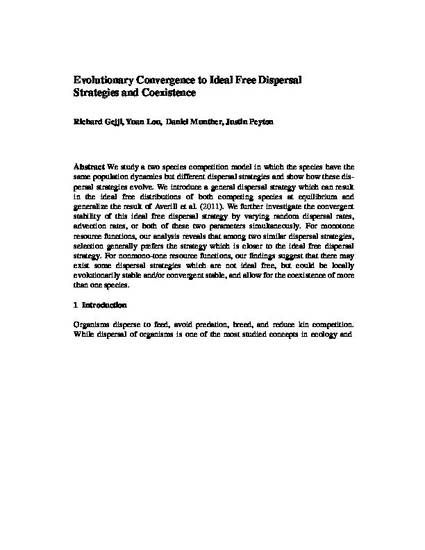
We study a two species competition model in which the species have the same population dynamics but different dispersal strategies and show how these dispersal strategies evolve. We introduce a general dispersal strategy which can result in the ideal free distributions of both competing species at equilibrium and generalize the result of Averill et al. (2011). We further investigate the convergent stability of this ideal free dispersal strategy by varying random dispersal rates, advection rates, or both of these two parameters simultaneously. For monotone resource functions, our analysis reveals that among two similar dispersal strategies, selection generally prefers the strategy which is closer to the ideal free dispersal strategy. For nonmonotone resource functions, our findings suggest that there may exist some dispersal strategies which are not ideal free, but could be locally evolutionarily stable and/or convergent stable, and allow for the coexistence of more than one species.
Available at: http://works.bepress.com/daniel-munther/4/
